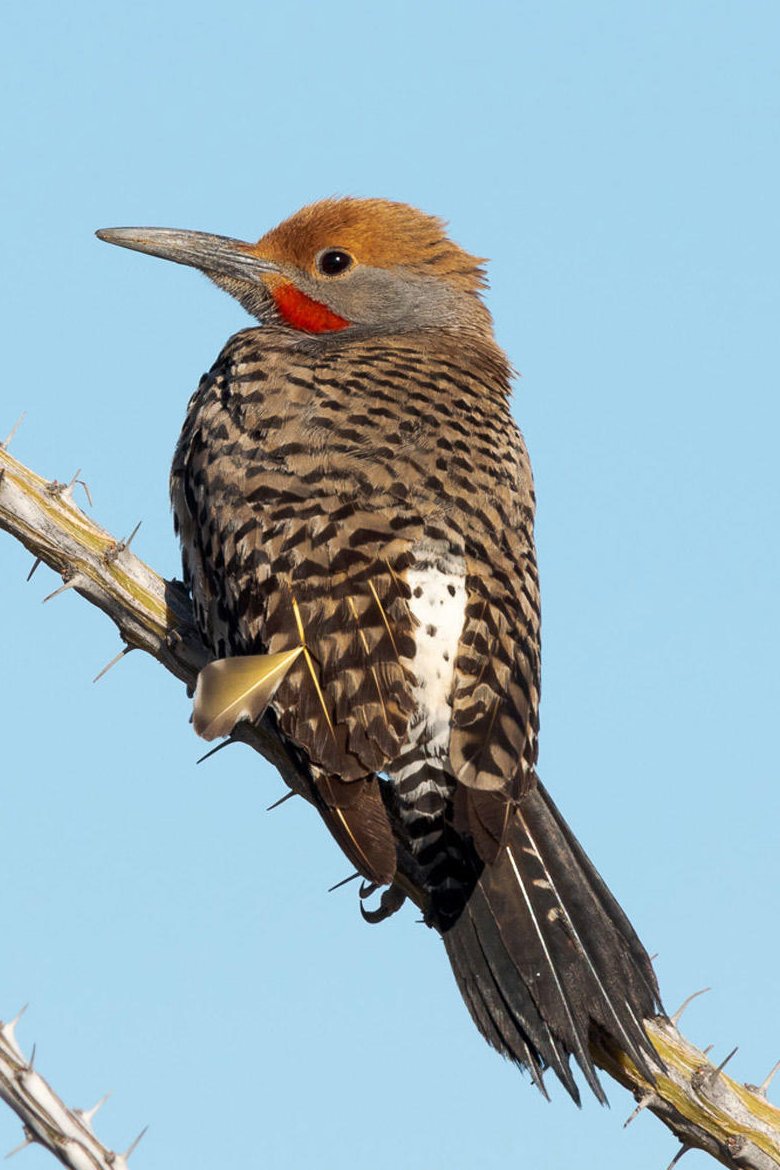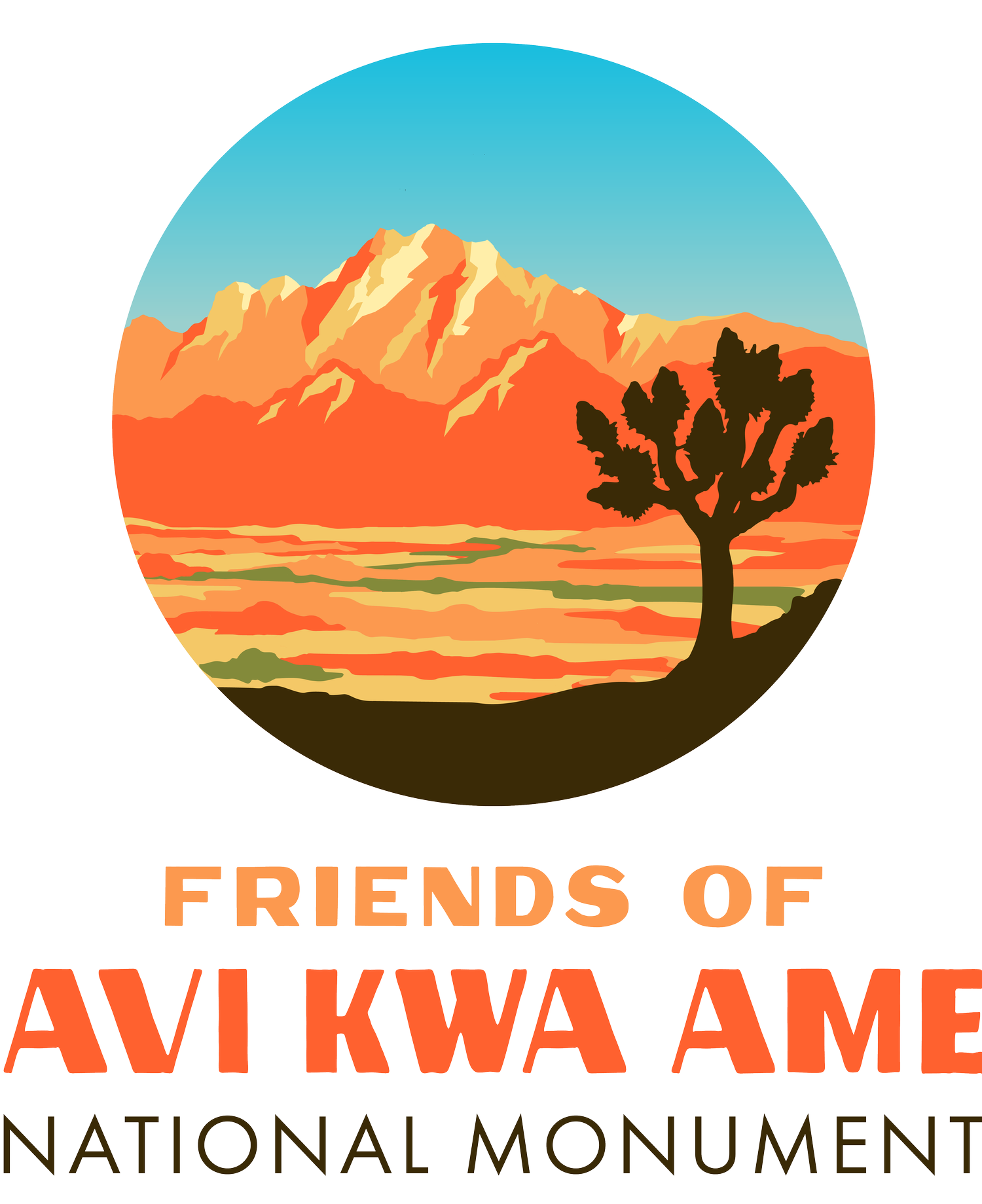HIKING TRAIL:
WEE THUMP JOSHUA TREE / EL DORADO TRAIL
Type: Out and back or can be done as a one-way if a shuttle car is used
Trail End Point: 3 miles one-way from parking
Total trail length: 3-6 miles
Trail Surfaces: Loose gravel, sand, rock
Difficulty: Easy to moderate
Restrooms: None
Parking Type: Large gravel parking lot
Vehicle Access to Parking: All-types
Dogs: Allowed on Leash
Guides: No trail markers but easy to follow
Accessibility: Not wheelchair accessible
Activities: Walking, bird watching, horseback riding
OVERVIEW
This magical desert hike is along the historic Eldorado Wagon Train Road that went from Searchlight to Nipton in the early 1900’s to serve the bustling mining district around Searchlight. The hike is through the 6,050-acre Wee Thump Joshua Tree Wilderness Area, a stunning natural landscape. The hike is quite casual and enjoyable as it takes you through a very diverse and quite pristine desert landscape. This is the eastern extension of the world’s largest Joshua Tree Forest. You are immediately struck by the size and density of Joshua trees in this part of the Mojave Desert. The hike also offers views of the South McCullough and New York Mountain ranges as well as distant views of Avi Kwa Ame (Spirit Mountain).
The google pin for the start of this hike can be found here, and the coordinates are 35.514490, -115.105658




ABOUT THE ROUTE:
The trail generally parallels Nevada Highway #164 and is an easy 6-mile long “back and out” hike if you take it all the way to where it connects to another trailhead on the East Wee Thump Road and return on that same route. What many folks do is to have a car at each end which reduces the hike to around 3 miles. Of course, you do not have to take the entire length of the trail. You can turn around at any point and still have a good experience.
The elevation at the beginning of the trail is around 4,600 feet and at the end 4,100 feet. The grade is gradual and the tread is light to medium sand and dirt with some vegetation growing in the old trail bed. The hike is just a little over 2 hours if you take the entire out and back and half that if you only go to the second trailhead on the East Wee Thump Road and shuttle vehicles. At the main trailhead off of Nevada Highway #164, there is a Wee Thump Joshua Tree Wilderness sign and a fence. Simply walk through the break in the fence and go straight for around 100 yards to where the path intersects with the old road. Take a right and simply follow the old roadbed. More information about Joshua trees and other plants and animals of note can be found at the bottom of this hike’s description.
In addition to Joshua Trees, Mojave Yucca, and blackbrush, hikers can also find buckhorn cholla, creosote bush, white bursage, banana yucca, bunch grass, matted cholla, prickly pear, and other species.
This bio-diverse habitat makes for fascinating bird watching. The area through which the trail traverses has also been designated by National Audubon and Bird Life International as an “Important Bird Area,” a national designation recognizing its importance for bird conservation. Birdwatchers may spot-Gilded Flicker (known to occur in Nevada only in this location), Northern Flicker, Ladder-backed Woodpecker, Black-throated Sparrow, Red-tailed Hawk, Crissal Thrasher, Verdins, Brewer’s Sparrows, American Kestrel. Golden Eagle, Common Raven, Loggerhead Shrike, Bewick’s Wren, Bushtits, Ash-throated Flycatchers, and Cactus Wren.
The Bendire’s Thrasher and LeConte’s Thrasher are also found in the Wee Thump area. Both of these trashers are species of concern for possible listing on the Endangered Species list because of declining populations. Avi Kwa Ame’s designation as a national monument helps ensures that their breeding habitats are protected for generations to come.
Other wildlife roaming the area include desert bighorn sheep, coyote, bobcat, mountain lion, desert cottontail, black-tailed jackrabbit, valley pocket gopher and desert wood rat. Occasionally, you may also spot the threatened desert tortoise, although they are usually found in lower elevations within the Monument’s creosote/bursage plant community. Bighorn sheep migrate through the Wee Thump Wilderness area from the South McCullough Range to the Highland Range.
KNOW BEFORE YOU GO:
Be sure to take plenty of drinking water. Staying hydrated on your hike is of utmost importance. There is no water available along the trail. In the hot summer months, temperatures can reach over100 degrees, even though the hike is at an elevation over 4,100 feet. On a hot day, you should be drinking 1 quart of water per hour of hiking. When half of your water is gone when hiking, turn around and head back. Drinking water before hiking can help reduce the risk of dehydration, as well as drinking during the hike (don't wait until you feel thirsty). Bring electrolyte replacements such as sports drinks or salty snacks. Bodies not only suffer from lack of water, but lack of sodium electrolytes as well. Make sure to wear sturdy shoes, a sun hat and sunscreen. A compass will also help you find your way back to the car if you decide to just take off and hike cross-country. Water, food, gas and restrooms are available in Searchlight.
DIRECTIONS AND PARKING:
The trailhead for the Eldorado Trail is off the north side of Nevada Highway 164. From Las Vegas, drive south on U.S. Highway 95 to Searchlight. In downtown Searchlight, turn right onto Nevada Highway 164 (Joshua Tree Highway) and drive west for 11 miles to a pullout on the north side of the road. A short access road leads to a parking area by a large Wee Thump Joshua Tree Wilderness Area sign.
The trail can also be done in reverse by starting off from the East Wee Thump Road. The turnoff for the East Wee Thump Road is 8 miles from Searchlight on Nevada Highway 164. Turn right and travel about a mile. There is a parking area there that directly accesses the trail about a quarter mile past the old windmill.
The google pin for the start of this hike can be found here, and the coordinates are 35.514490, -115.105658
MORE INFORMATION
Joshua Trees currently are only found growing in the United States Southwest (California, Nevada, Utah and Arizona). The stand at Wee Thump is home to some of the oldest and largest Joshua trees on the planet. These ancient ones have grown tall in the silence of the desert, some rising to almost 30 feet over 900 years. Its fibrous root system can spread nearly 40 feet, enabling it to thrive in its harsh, dry environment. The Joshua tree is actually not a tree but a member of the Agave family (Yucca brevifolia). Until recently, it was considered a giant member of the Lily family. However, modern DNA studies led to the division of that formerly huge family into 40 distinct plant families. Because of these studies, Joshua trees now have the more accurate Agave family designation.
The name “Joshua tree” is attributed to Mormons passing west through the Mojave Desert from Utah in the mid-19th century in search of a new promised land. It is said that the Mormons named the tree Joshua, after the Old Testament figure who led the children of Israel in the conquest of Canaan. It seemed to them the outstretched limbs were directing the Mormons forward into another promised land. In the Southern Paiute language, “Wee Thump” means “ancient ones”, a fitting name for this magical wilderness where the Joshua trees stand so tall and are so old.
The Joshua relies on an astonishing symbiotic relationship with the tiny Joshua tree moth to perpetuate its existence – which in turn, sustains the moth’s survival. Joshua trees don’t produce nectar to attract pollinators. Its survival is dependent entirely on the tiny yucca moth. Built to navigate around the tough waxy foliage, yucca moths collect pollen from one part of the flower and drop it off on the female part, moving from bloom to bloom. The yucca moth’s survival is also dependent on the Joshua tree, which provides the perfect place to lay eggs on the seeds of flowers. The seeds are the yucca moth caterpillars’ only source of food. It’s through this most unique partnership that both survive in this unlikely place.
For thousands of years native Indian groups embraced the Joshua tree as a spiritual reference and valued resource. They traditionally ate Joshua tree buds and flowers, as well as the seeds in the pods, eaten raw and also cooked in porridge. They also used the roots of the Joshua tree for basketry material which created a dark, reddish-brown design in the finished basket. The tree’s fibers were also used to make sandals.
Another really important plant to observe along this hike is the Mojave Yucca. Both the Joshua Tree and the Mojave Yucca are considered indicator species for the Mojave Desert. An indicator species is a plant, animal, or microorganism that can signal positive or negative changes in its environment. Scientists use indicator species to understand the health of an ecosystem, and to identify changes in it. They can also help researchers understand the effects of pollution and climate change on specific ecosystems. Joshua trees are indicators of climate change because of their slower reproduction in response to hotter temperatures and drought.
Like the Joshua Tree, the yucca was an important plant in helping to sustain life for the indigenous peoples. The fibers from the leaves of this species were used by Native Americans to make rope, sandals, and cloth. The flowers and fruit were both eaten and the black seeds were ground and used as flour. Some reports suggest that the roots could be mashed and mixed with water to make soap for washing clothes. The plant also contains chemicals that may reduce swelling and have antibacterial and antifungal properties as well as a source for Vitamin C.
Another important vegetative community that can be observed along the trail’s path is what is called the “blackbrush community.” They form these monoculture carpets of dormant summer gray. These stands are crucial parts of the desert biome. Blackbrush is hard for people to hike through, and it’s just as hard for non-human hikers to penetrate. This means that other plants’ seeds — Joshua tree, Mojave yucca, cacti of various kinds find a congenial place to germinate and grow for a few years, out of the reach of rodent paws and rabbit jaws. Blackbrush thus acts as a “nurse plant” to many other, more noticeable desert species. Without blackbrush cover, we’d have a lot fewer picturesque succulents out there. An old-growth forest is what it is, after all, especially from the point of view of the packrats and kangaroo rats and night lizards that inhabit it. The blackbrush forest has been there for tens of thousands of years, feeding and sheltering unimaginable thousands of generations of their forebears.
The black-tailed jackrabbit is one of the more interesting mammals in this wildlife mix. Jackrabbits are larger and leaner than resident cottontail rabbits. A significant amount of blood flows through the many blood vessels of a jackrabbit's ears, which helps dissipate heat, an important adaptation in the desert. Reaching a length around 2 ft, and a weight from 3 to 6 pounds, the black-tailed jackrabbit is one of the largest North American hares. The black-tailed jackrabbit does not migrate or hibernate during winter and uses the same habitat of 0.4–1.2 square miles year-round. Its diet is composed of various shrubs, grasses, and forbs. The black-tailed jackrabbit is an important prey species for raptors and carnivorous mammals, such as eagles, hawks, owls, coyotes, foxes, and wild cats within the wilderness area.






